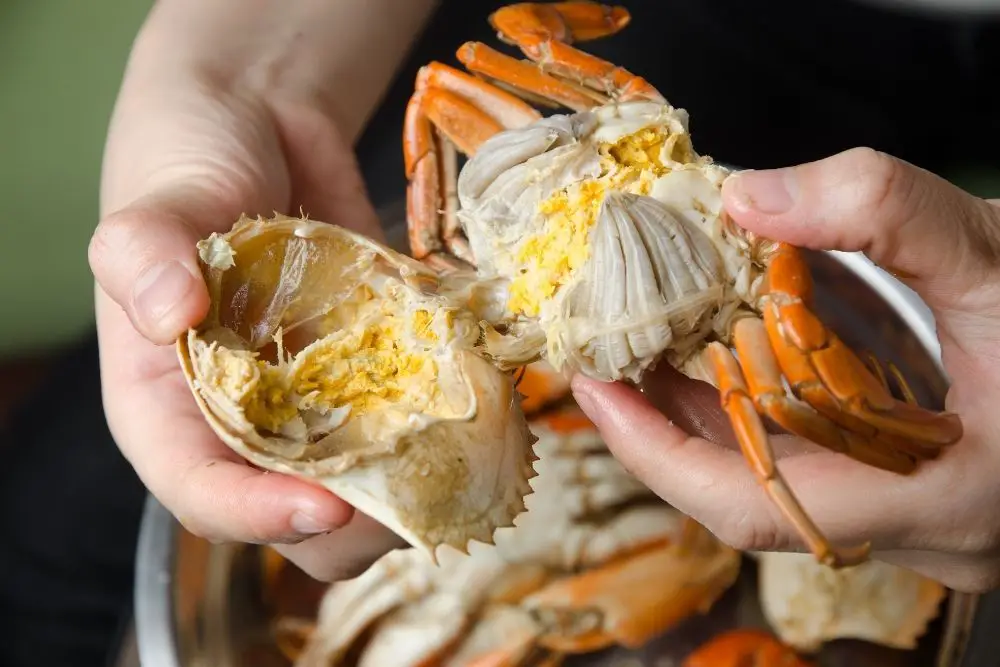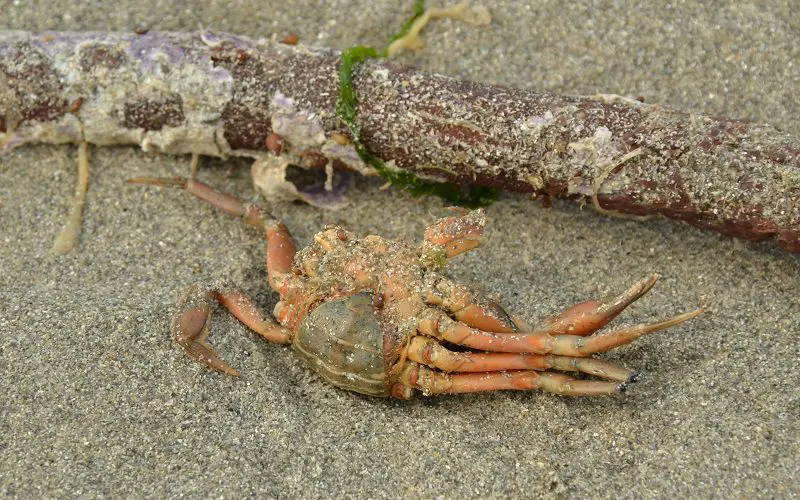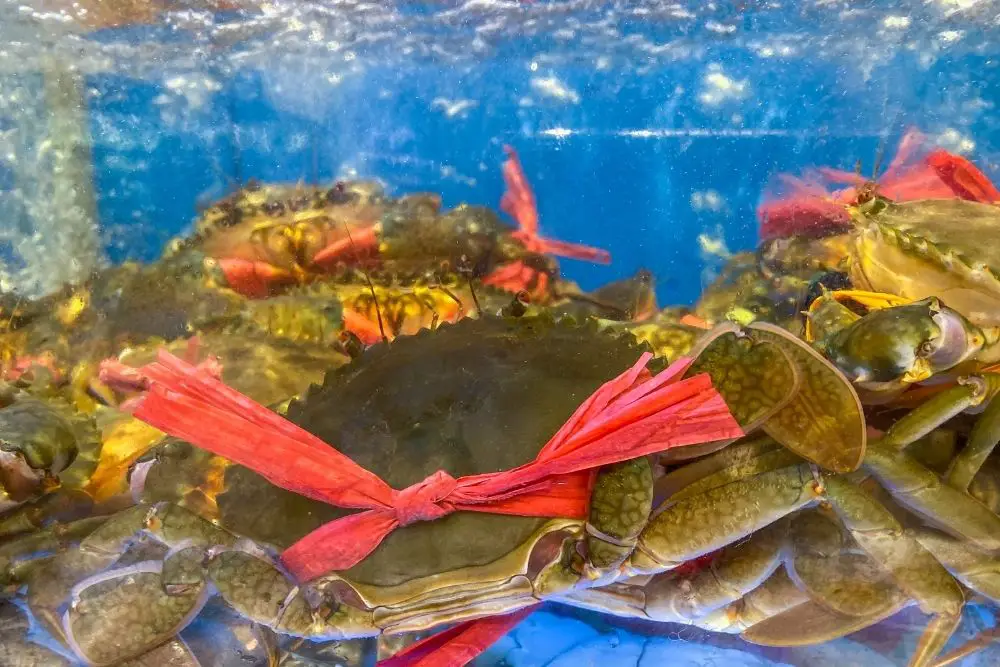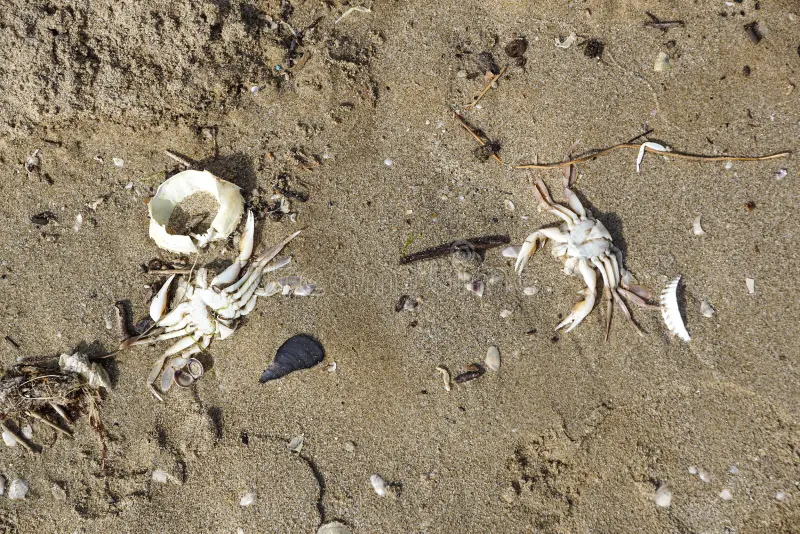SHTFPreparedness may collect a share of sales or other compensation from the links on this page.
If you happen to be in a survival situation and end up near the ocean, your odds are pretty good. Mainly because the ocean is a great source of food! You could try fishing or catching all sorts of different seafood, with one of the most popular being a crab.
Such a delicacy! And as they pretty much just walk around, they’re pretty easy to catch. But what if, instead of catching a crab, you come across a dead one? Does that mean you’re lucky and have an easy meal? Can you eat dead crabs?
Or should you avoid it? Basically, can you eat a dead crab? As a general rule, no. If the crab has only been dead for a few hours, then you can eat it. If it’s been dead for more than a few hours but has been on ice, you can eat it.
If you catch it alive and kill it, eat it. But if you don’t know when the crab died, throw it away. Eating a crab that has been dead for quite a while can make you really sick.
So unless you know exactly what you are doing, when the crab dies, just be safe and stay away from it. You can always ignore the dead crab and go find a live one!
But let’s get into more detail, as we’re going to tell you everything you need to know about eating crabs!
Can You Eat Dead Crabs?

We have already mentioned that you shouldn’t really eat dead crab, or at the very least dead crab that you don’t know how long it has been dead for. Obviously, if you catch and cook a crab, it’s going to be dead when you eat it, but it’s different because you know for sure it’s fresh.
But why can’t you eat dead crab? We have two main reasons. Firstly, you could get food poisoning. And secondly, because it’s just not going to taste good if it’s been dead for a while, crab should always be eaten fresh.
Obviously, the most important reason is the first: possible food poisoning. This happens because when a crab dies, it will start to decompose just like any other animal would; it’s the natural course of death. But when something decomposes, bacteria appear.
And these bacteria can make you seriously sick, and in the case of a dead crab, they can give you shellfish poisoning. And the thing is, it doesn’t take long for these bacteria to appear, which is why there is such a huge emphasis on the crab being as fresh as possible.
Within just 30 minutes of the crab dying, the enzymes and bacteria that are found in the crab’s gut will start spreading to the rest of the body. This can be slowed down if the crab is placed on ice, which is why you can freeze the crab to eat it at a later date.
But otherwise, eating the crab is not a good idea and is actually pretty risky. And going back to the second reason, it’s not exactly as important, especially not in a survival situation in which the taste of the food is the least of your concerns.
But it is worth knowing that dead crab does not taste good; the texture and flavor are ruined, and it becomes kind of mushy. Ideally, you should cook a crab within 10 to 15 minutes after they die!
The Danger Of Shellfish Poisoning

One of the main reasons why you should not eat a dead crab that you find on the shore is that it is very likely to give you shellfish poisoning, so let’s talk a little more about what this is and how to recognize the symptoms.
Shellfish poisoning happens when you eat a crab that has been dead for a while, but it can also happen when you eat other seafood such as shrimp, clams, oysters, and similar.
The poisoning occurs when the shellfish are contaminated with bacteria or viruses, which is likely to be the case if they have been dead for a while. Hence, shellfish should always be as fresh as possible when consumed.
Usually, you will be able to smell if a shellfish has been contaminated because it will have a very strong, putrid odor that will make you want to puke.
But if you do eat contaminated shellfish, you will start to experience the symptoms of shellfish poisoning between 4 and 48 hours after you have eaten it.
As for the symptoms themselves, here are the most common ones to look out for:
- Nausea
- Fever
- Vomiting
- Diarrhea
- Abdominal pain and cramps
If you have shellfish poisoning, then it is very important that you drink plenty of liquids so that you stay hydrated. And although vomiting might seem like a good way to get it out of your system, you should not force it.
If the vomiting and diarrhea are really bad, you might need some IV fluids.
Also, avoid taking any sort of medicine, as there is nothing that will help, and if anything, it might make the symptoms last longer. Shellfish poisoning just has to be lived through until it’s out of your system.
However, if the symptoms become dangerous, you should seek medical help in order to ensure they can be managed appropriately to avoid other issues.
How To Know If A Crab Is Dead Or Alive

So, crabs that are alive are good for eating; crabs that are dead are not. So you can go out and catch crabs as a good food source, so long as you avoid any dead ones you come across. But what if you can’t tell if a crab is dead or alive?
Sometimes they stand so still that you have doubts! There are many ways in which you can test whether a crab is alive or not, but the main idea is to try and get some movement or reaction from the crab, as proof that it is indeed alive.
The most common technique is to simply pour some water over the crab and see if it moves. If not, you can flip the crab over, pull at a leg, or do similar things, looking out for any sort of reaction.
However, if the crab is simply not moving and you’re still unsure, just assume that it is dead and move on. It is better to be safe than sorry, and there will be plenty more crabs around!
Eating crabs for survival:
If you are in a survival situation, the ocean is a great source of food, and therefore, being near it will provide you with some advantages. The downside is, of course, that unless you prepare the food properly, it is likely to make you sick.
Now, if you truly are in survival mode and you find a beach with crabs, you have found a gold mine. Crabs are very easy to catch, and there will be plenty of them. Catch the ones that are alive, and then cook them to eat.
Avoid the dead ones, unless it is to use them as bait for fishing for other food!
Other Questions

Here are some other commonly asked questions, answered for you, just so that you aren’t left with any major doubts on the subject of eating crabs!
What Parts Of The Crab Can You Eat?
You can eat every single part of a crab, as the entire crab is safe for consumption (if fresh), and will have some nutritional value. However, some parts of the crab will not be as tasty as others!
What Is The Yellow Stuff That Comes Out Of Crabs?
When you eat a crab, you will notice that there is some yellow stuff inside it. This is completely safe to eat and is actually considered one of the tastiest bits. It is the hepatopancreas and is essentially just crab fat.
Can Undercooked Crab Make You Sick?
Yes, if you do not cook the crab properly, it is likely to make you sick. So always make sure that you are cooking the crab completely and not eating it raw!
Final Thoughts
If you are in a survival situation near the ocean, crab is going to be an excellent source of food for you. However, you cannot eat dead crab, as it is likely to give you shellfish poisoning.
So if you find a dead crab, stay away from it. Instead, you have to look for crabs that are alive, catch them, and cook them so that you can eat them fresh!
However, you can give dead crabs a use by using them as bait when fishing for other food in the water!
Resources: